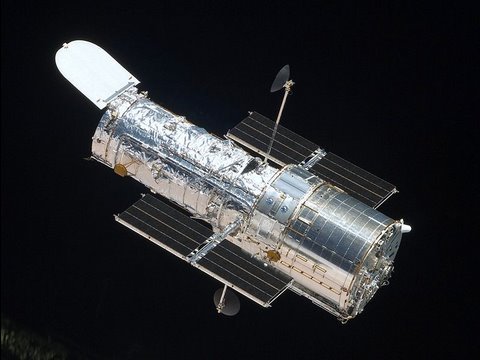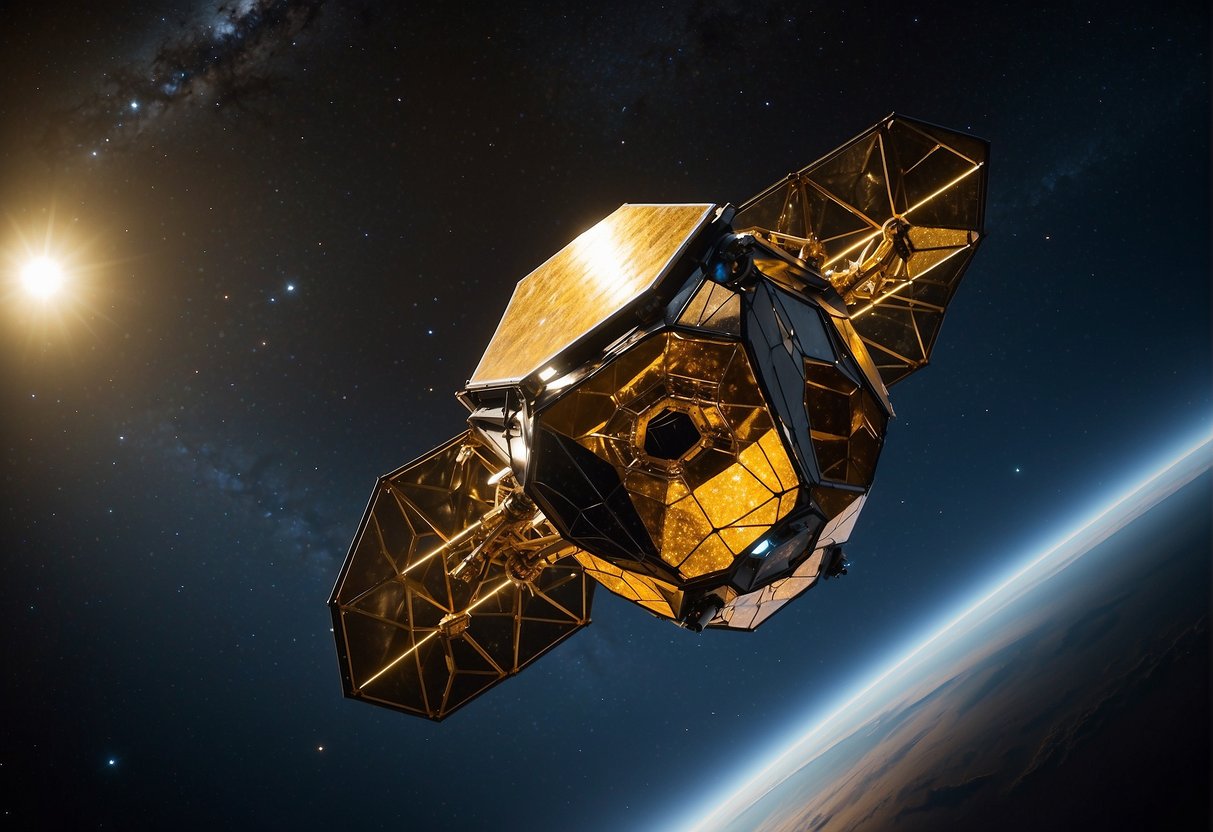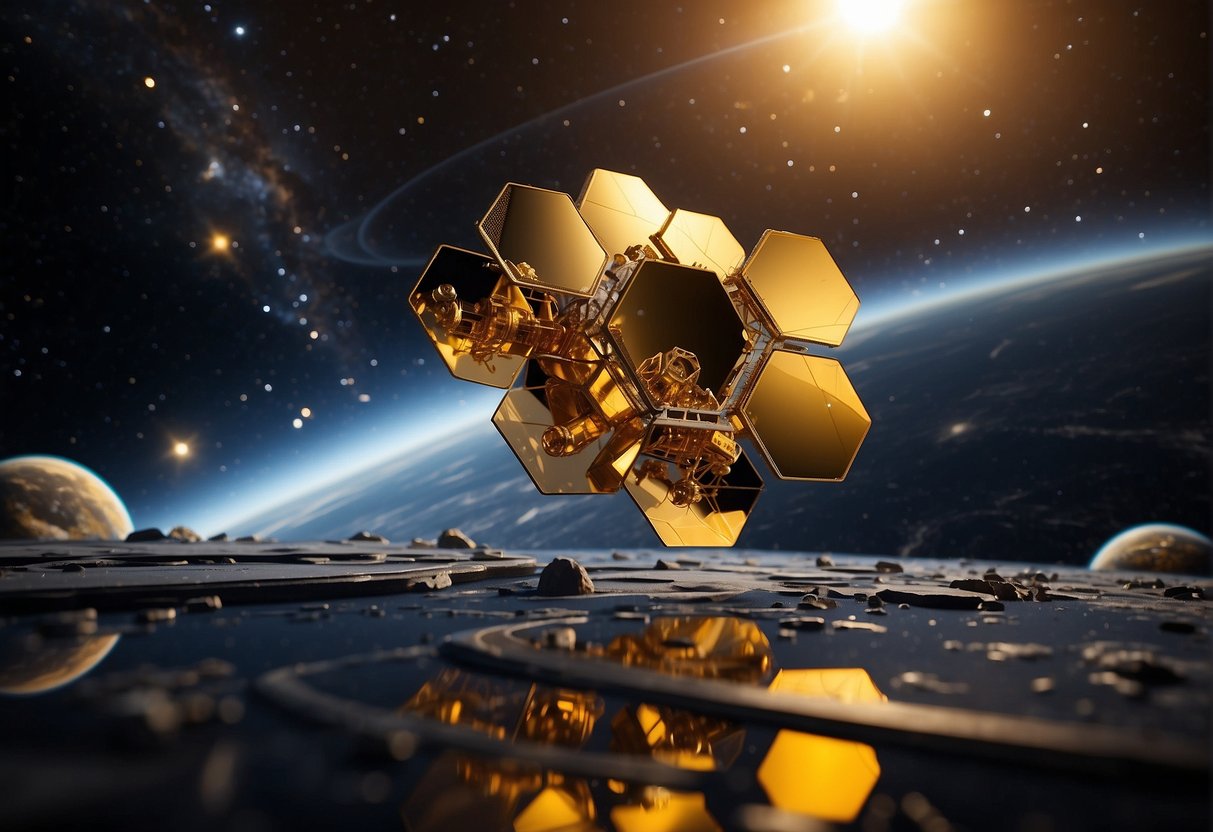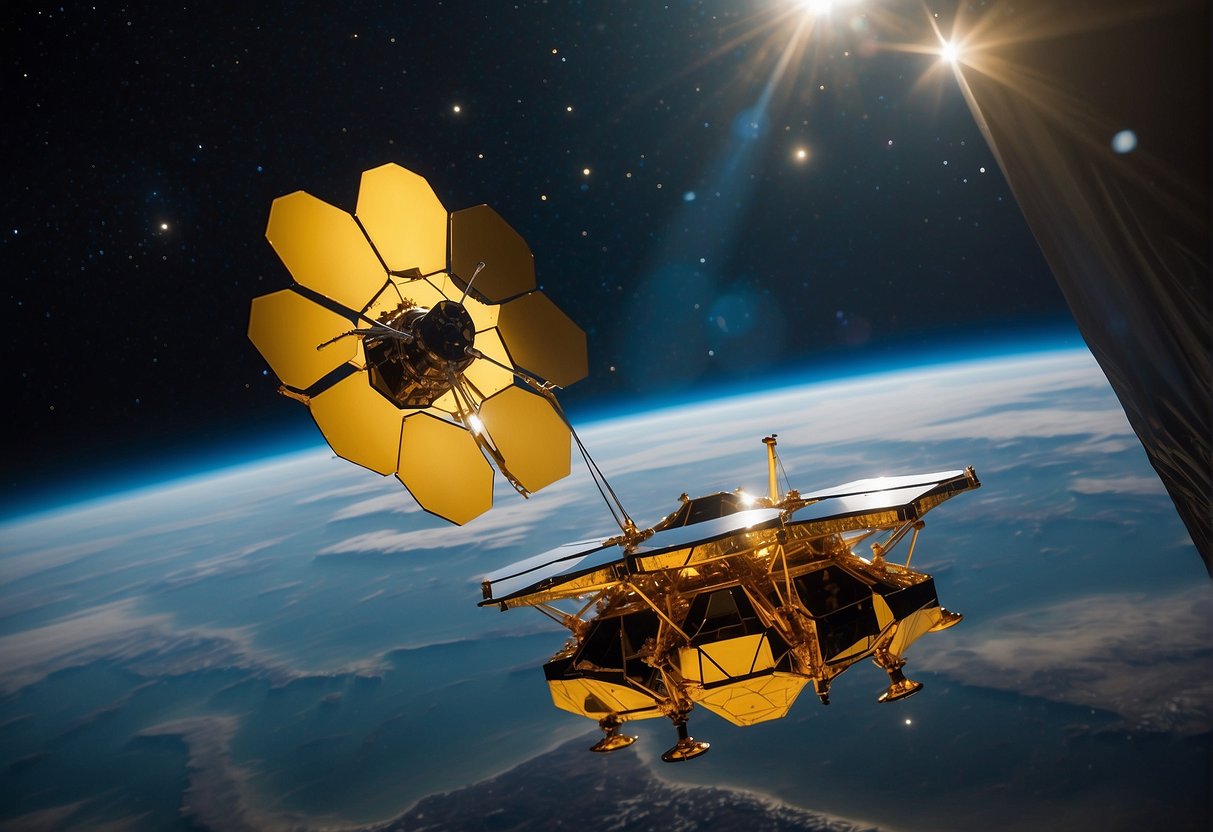
The James Webb Space Telescope (JWST) has inaugurated a new epoch in the chronicles of astronomy. Towering on the shoulders of its predecessors like the Hubble Space Telescope, JWST is designed to peer deeper into the universe than ever before. This scientific marvel embodies humanity’s most profound quest—to understand the cosmos from the earliest formations of stars and galaxies to the possibility of life on distant worlds. With each image and dataset, the telescope transforms our grasp of the cosmos, revealing not just breathtaking vistas of space, but also key insights into our universe’s past, present, and future.

Packed with pioneering technology, this orbital observatory represents an international collaboration at an unprecedented scale, where innovation meets exploration. The telescope showcases a suite of high-precision instruments capable of observing in near-infrared to mid-infrared wavelengths, which allows it to cut through cosmic dust and uncover scenes of star formation that have remained hidden until now. Each observation sharpens our understanding of the universe’s underlying mechanics and enriches the resource base from which astronomers will draw conclusions for decades.
As it drifts silently in space, operating far beyond Earth’s distorting atmosphere, JWST is a sentinel of scientific progress. Its studies promise to elucidate the mysteries of dark matter, the evolution of galaxies, and the intricate dance of celestial objects. The telescope not only changes our perspective on the universe but also ushers in an era where the astronomical community and the general public alike can anticipate significant advancements in the knowledge of our cosmic surroundings.

The James Webb Space Telescope (JWST) represents an unprecedented leap in space observation technology, building on the legacy of the Hubble Space Telescope. By marrying cutting-edge engineering with international collaboration, JWST is set to explore the cosmos with unparalleled depth and clarity.
The Hubble Space Telescope, launched in 1990, has been humanity’s eye into the universe for over three decades. Operated by NASA and the Space Telescope Science Institute in Maryland, Hubble has provided invaluable data across many scientific disciplines. However, its successor, the JWST, designed with a much larger mirror and specialized instruments, is engineered to observe the universe in longer wavelength infrared light which allows it to peer inside dust clouds where stars and planetary systems are forming, and to look further back in time than Hubble ever could.
A collaborative effort among NASA, the European Space Agency (ESA), and the Canadian Space Agency (CSA), the JWST involves a large international consortium, demonstrating a model in scientific cooperation. Development was primarily conducted at the Goddard Space Flight Center, while spacecraft and scientific operations are managed by the Space Telescope Science Institute. This partnership not only pooled resources but ensured a broad scientific reach for the mission’s research agenda, allowing JWST to stand as a testament to the capability of international collaboration in advancing human knowledge of the cosmos.
The James Webb Space Telescope (JWST), a premier space science observatory, has been intricately designed to probe the cosmos like no other instrument before. It amalgamates powerful technologies and capabilities, allowing astronomers to study the universe in unprecedented detail.
JWST features a suite of state-of-the-art instruments, with the Near Infrared Camera (NIRCam) playing a critical role as the observatory’s main imaging component. Designed to observe high-redshift galaxies, NIRCam is equipped with coronagraphic capability, crucial for studying exoplanets and proto-planetary disks by blocking out excessive light from stars. Another pivotal instrument is the Near Infrared Spectrograph (NIRSpec), which can observe up to 100 objects simultaneously, providing a comprehensive analysis of cosmic phenomena via powerful spectroscopy.
JWST’s mastery of infrared astronomy enables it to look back in time to witness the formation of the first galaxies and stars. By operating primarily in the infrared spectrum, the telescope can peer through dust clouds that obscure other wavelengths. Its advanced spectroscopy tools are pivotal for analyzing the physical and chemical properties of astronomical objects, giving insights into their temperature, mass, and composition.

The James Webb Space Telescope (JWST) aims to address some of the most profound questions about the cosmos. It is designed to look back over 13.5 billion years to see the first galaxies that formed after the Big Bang and to study the atmospheres of potentially habitable exoplanets.
The JWST will observe the process of star formation and the creation of galaxies to offer insights into the conditions of the early universe. Studying faint galaxies in the distant universe allows scientists to understand how galaxies assembled over billions of years. The telescope’s infrared capabilities make it possible to see through dust clouds where stars and planetary systems are being born, providing a view that has never been seen before.
Peering back to just after the Big Bang, the JWST seeks to explore the early universe to learn more about the epoch of reionization when the universe’s first light shone through. By analyzing the light from the first objects that formed, JWST can explore how the universe has evolved over time. The information gathered may give unprecedented insights into the epochs of galaxy, star, and planet formation – unlocking the secrets of our own cosmic history.
The James Webb Space Telescope (JWST) has marked a new epoch in the observation of the cosmos, shedding light on some of the most profound mysteries that space has to offer.
The JWST’s advanced instruments have provided unprecedented views of distant galaxies, enabling astronomers to study their formation and evolution. A noteworthy discovery includes images of the most distant quasar ever observed, which offers a glimpse into the universe’s formation, as detailed in The Astrophysical Journal Letters. These quasars, extremely bright and powered by supermassive black holes at their centers, serve as beacons illuminating the early universe.
JWST’s observations have also focused on the enigmatic black holes and the elusive dark matter that pervades the universe. In particular, the Early Release Science Program provided an intricate look at how supermassive black holes influence their surrounding galaxies. Findings such as these, critical to understanding the formation of cosmic structures, are often reported through reputable mediums like The Astrophysical Journal. By analyzing the interaction of light and dark matter, researchers hope to unravel the mysteries of these invisible constituents that have a significant gravitational impact on the cosmos.

The deployment of the James Webb Space Telescope (JWST) marks a significant leap forward in our understanding of the universe. This section delves into how the JWST is revolutionizing astronomical research through enhanced collaboration and an unprecedented shift in cosmic exploration.
The JWST is the product of a global effort, involving agencies such as NASA, ESA, and CSA. This international program is a testament to the power of collaboration in advancing scientific knowledge. Together, these organizations oversee the telescope’s science operations, ensuring that astronomers from around the world can work hand-in-hand to unlock the universe’s mysteries. By sharing archival data extensively, the astronomical community benefits from a wealth of information, thereby accelerating discoveries and innovation.
Astronomers are now equipped with a tool that significantly expands the boundaries of observable space. The JWST provides capabilities to peer into the atmospheres of exoplanets, observe the earliest galaxies, and reveal the detailed structure of cosmic entities with an unprecedented clarity. This shift in cosmic exploration allows for a deeper understanding of fundamental processes and objects in the universe, changing the way we perceive our cosmological home. The JWST is setting a new standard for what can be achieved in observational astronomy, reshaping expectations for future research.
As the James Webb Space Telescope (JWST) gazes into the depths of the universe, its operation and data analysis mechanisms are pivotal to the success of the mission. Advanced systems facilitate both the management of science operations and the subsequent utilization of gathered data, ensuring that the observatory’s potential for discovery is fully realized.
The centerpiece of Webb’s operational prowess lies within the Advanced Science Operations Center (ASOC), where a suite of sophisticated software tools and dedicated personnel manage its complex science operations. From this hub, the ASOC coordinates the telescope’s instruments to capture astronomical phenomena, ensuring meticulous planning and command execution. Data received undergoes an initial processing stage at the ASOC to transform raw readings into usable scientific information, ready for further analysis.
Once the data journey through the initial processing at the ASOC, it becomes available for wider Data Utilization and Publication. Astronomers worldwide can delve into this repository to conduct extensive data analysis, propelling forward our understanding of the cosmos. The commitment to making data publicly accessible is a cornerstone of the JWST mission, intended not just for immediate scientific discoveries but as a legacy for future research. Utilizing Webb’s data, researchers publish their findings, expanding our collective knowledge and sparking new questions about our universe.
In the wake of the James Webb Space Telescope’s (JWST) groundbreaking work, the future of space exploration promises to unlock further mysteries of the cosmos. As astronomers continue to harness JWST’s capabilities, the expanding universe becomes a focal point for both exploration and understanding.
The JWST’s advanced instruments are pivotal for astrophysicists seeking to observe phenomena beyond the reach of prior telescopes. With its unparalleled resolution and sensitivity, JWST is set to explore the atmospheres of exoplanets, offering insights into their composition and potential habitability. These studies are critical in highlighting areas where life might exist or could be sustained outside our solar system.
The impact of the James Webb Space Telescope will resonate throughout the scientific community for decades, shaping the future direction of space exploration. JWST’s discoveries regarding the early universe and the lifecycle of stars are providing a new understanding of how galaxies evolve over time. Furthermore, its observations of the expanding universe are refining estimations of cosmic expansion rates, contributing to theoretical models that could redefine physics as we know it.
This instrument’s legacy is not just in the data it collects but also in the inspiration it provides for the next generation of telescopes that will follow in its path to probe even deeper into the unknown reaches of space.
The James Webb Space Telescope (JWST) has revolutionized our view of the universe by capturing images and data of celestial phenomena with unprecedented clarity. Utilizing its powerful suite of scientific instruments, the JWST has revealed intricate details of planetary systems and the grandeur of cosmic structures.
The JWST provided stunning visual evidence of the intricacies within planetary systems, including our own solarong> system. It revealed minute details of the Southern Ring Nebula, unearthing new complexities of its gaseous layers. A fresh look at our solar system led to identifying molecules on a nearby exoplanet that could possibly support life, hinting at the rich potential beyond our celestial home.
In its quest to explore the distant reaches of the cosmos, the telescope has committed to memory the vastness of galaxy clusters and the nuances of distant galaxies. The JWST’s powerful gaze has observed a galaxy that challenges our understanding of the early universe’s formation, a find dating back 11.5 billion years. Scientists have also been able to observe the Carina Nebula in a new light, putting focus on stellar creation and cosmic dust.

In the grand tapestry of existence, the James Webb Space Telescope (JWST) serves as humanity’s newest eye into the universe. It grants unparalleled views of the cosmic web—the vast network of galaxies stretching across the expanse of space. The Milky Way galaxy, which we call home, is but one of countless galaxies JWST is designed to study with exquisite detail.
As one contemplates the JWST findings, they might experience a simultaneous sense of insignificance and wonder. The images and data beam back the vibrant lifecycle of the universe—from the formation of stars in the Milky Way to the intricate structure of the cosmic web. Each photon captured is a messenger of the past, providing scientists with the tools to piece together the evolutionary tale of the cosmos.
The JWST’s deep field observations present a portrait of a universe more elaborate than previously imagined. Its high-resolution spectroscopic instruments can analyze the chemical composition of celestial bodies, unveiling the potential for life-sustaining environments far beyond our solar system.
With every celestial snapshot and spectral line, the JWST enriches human understanding of the profound complexities of the universe. The telescope offers a sublime reminder of the universe’s grandeur and constant evolution, and with this knowledge, one can better appreciate the wonder of living within such an unfathomably vast cosmic landscape.
The James Webb Space Telescope represents a monumental leap forward in our quest to understand the cosmos. Each question here is carefully answered to provide clarity on this groundbreaking mission.
The James Webb Space Telescope is designed with a much larger mirror than the Hubble, allowing it to gather more light and observe fainter objects. Its instruments are optimized to view the universe in infrared light, enabling it to see through dust and gas to capture phenomena Hubble cannot.
Since its deployment, Webb has unraveled numerous cosmic mysteries. It has shed light on the atmospheres of exoplanets, providing new insights into their composition, and it has observed the most distant galaxies, offering clues about the early stages of the universe.
Absolutely. The public can access a vast archive of Webb’s images which are regularly released by NASA. These images not only provide scientific data but also captivate the imagination with their stunning views of the cosmos.
Webb is equipped to observe the furthest reaches of the universe with unparalleled clarity. It will study the light from the first galaxies and stars, helping scientists piece together the universe’s developmental history and how it has evolved over billions of years.
By analyzing the atmospheres of exoplanets, Webb may detect signs of bio-signatures, such as oxygen or methane, that could indicate the presence of life beyond Earth. Its sensitive instruments are an essential asset in this profound quest.
Webb’s technical marvels include a folding mirror design and advanced infrared detectors. These features provide the telescope with the ability to view objects in high resolution that are too old, distant, or faint for other telescopes. Webb’s instruments can also operate at extremely cold temperatures, which enhances their sensitivity to infrared signals.